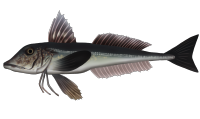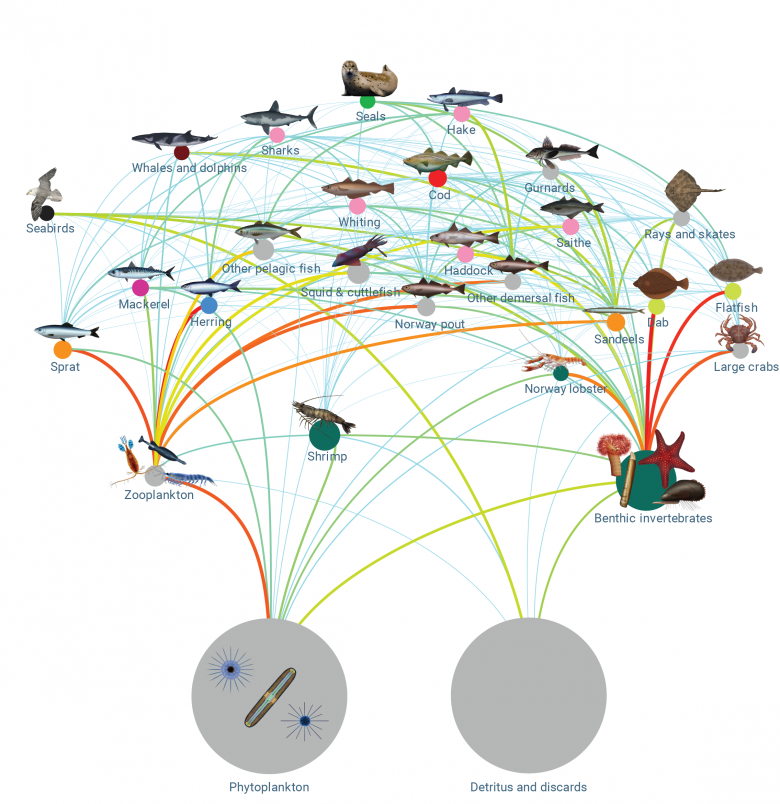No edit summary |
No edit summary |
||
| Line 64: | Line 64: | ||
</div> | </div> | ||
<div id='tab2' class='tab-pane fade'> | <div id='tab2' class='tab-pane fade'> | ||
[[File:Food web2.png|780px]] | |||
===In different languages=== | ===In different languages=== | ||
Revision as of 21:53, 13 April 2018
 | |
| Layer Info | |
|---|---|
| Category | Fish |
| Editable | No |
| Data source | Ecosystem simulation |
| Values | |
| Extremely Low | |
| Low | |
| Medium | |
| High | |
| Extra High | |
| Extreme | |
Description:
Small demersal fish
Example species: Grey gurnard
Habitat: Demersal
Main role: Predator
Trophic level: 4,5
Diet: Juveniles feed on a variety of crustaceans. The diet of older specimens consists mainly of juvenile fish.
Threats: Grey gurnards are of lesser commercial importance, and are mostly caught as bycatch for other flatfish.
Large demersal fish
Example species: Thornback ray
Habitat: Demersal
Main role: Predator
Trophic level: 3,8
Diet: This ray feeds on fish and invertebrates.
Threats: Of commercial interest and near threatened according to IUCN red list. The thornback ray is often caught as bycatch by trawl and gillnets.
MSP Challenge 2050:
The small demersal fish group includes the following species: eelpout, shorthorn sculpin, Vahls’s eelpout, longspined bullhead, hooknose, common seasnail, greater weever, lesser weaver, snake blenny, striped red mullet, solenette, thickback sole, mediterranean scaldfish, argentine, dragonet, piper gurnard, red gurnard and grey gurnard.
The large demersal fish group includes the following species: rabbit fish, John Dory, sea trout, Norway red fish, Bluemouth, roundnose grenadier, starry ray, spotted ray , Common skate, cuckoo ray and thornback ray.
Demersal fish are caught by all fishing fleets, but mostly by bottom trawl.
In different languages
Grey gurnard
- SN: eutrigla gurnardus
- EN: grey gurnard
- NL: grauwe poon
- GE: Graue Knurrhahn
- DK: grå knurhane
- FR: grondin gris
- NO: knurr
- SE: knorrhane
The grey gurnard is an abundant demersal species. Gurnards are key predators in the North Sea and have become more important in recent years. In winter they form dense aggregations locally to the northwest of the Dogger Bank, whereas in summer they are more widespread. This fish produces sounds.
Thornback ray
- SN: raja clavata
- EN: thornback ray
- NL: stekelrog
- GE: Nagelrochen
- DK: sømrokke
- FR: raie bouclée
- NO: piggskate
- SE: knaggrocka
The thornback ray is usually found on shallow mud, sand, or gravel seabeds up to 60m depth. It is less abundant in the southern North Sea. Its population levels are presently too low for the ray to fulfill its ecological role.
ON THIS TAB VISUAL CONTENT IS PLACED

 Co-funded by the European Union.
Co-funded by the European Union.